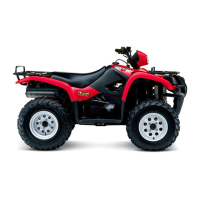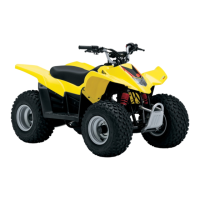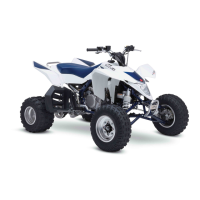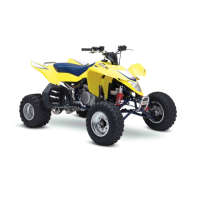17
BRAKE FLUID
Place the vehicle on the level ground and keep the
handlebars straight.
Check the brake fluid level in the front master cylinder
reservoir.
If the fluid level is below the “LOWER” level, add the
correct type of brake fluid.
Refer to the chart below for the proper selection.
BRAKE AIR BLEEDING
Any air which may have been trapped in the brake fluid
circuit must be bled completely.
If the brake lever feels spongy or weak, then most
likely there is air in the brake fluid circuit.
If air bleed is necessary, carry out the following proce-
dure.
1. Connect a clear hose to the air bleeder valve and
run the hose into a suitable clear container.
2. Pour approximately 1/2 in of brake fluid into the con-
tainer so that the end of the clear hose is sub-
merged and cannot draw any additional air back into
the circuit during the air bleeding servicing.
3. Close the valve, pump and squeeze the lever, and
open the valve while squeezing brake lever.
4. Repeat this process until the fluid flowing into the
receptacle no longer contains air bubbles.
5. After bleeding the brake circuit, tighten the bleeder
valve to the specified torque.
Reinstall the rubber protective cap.
6. Be sure to check the brake fluid level in the reservoir
tank.
Brake caliper air bleeder valve:
6.0 N·m (0.60 kgf-m)
A: Bleeder valve
Specification and Classification
DOT 4
NOTICE
Spilled brake fluid can damage painted sur-
faces and plastic parts.
Be careful not to spill any fluid when filling the
brake fluid reservoir. Wipe spilled fluid up
immediately.
NOTE:
Do not drop brake fluid level below lower level line
while bleeding air.

